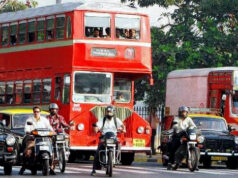Both China and India have grown rapidly in the last decade. However, India seems to perform less well in terms of economic growth and poverty alleviation compared to China. China’s results are striking: 9% annual growth on average and 300 million people lifted out of poverty over the last two decades. Whereas in India, despite high growth rates, poverty remains an unfortunate but inherent feature when picturing the country’s economic situation. Recently, one of my fellow co-workers had asked me whether I think India’s development might be slower because of its political system, i.e. democracy would slow down the access to greater wealth in a short period of time.
China is anything but a democracy, and, due to its political characteristics, controls in a repressive way substantial part of the economy, especially the financial sector that brought about massive imbalances. However, it has achieved better growth rates over the past few years. A centralized decision-making process, albeit discretionary, would presumably ease political action by by-passing all types of necessary approvals from a parliament or congress in a democratic system. Assuming that the political power controls all the economy in China (which is not the case anymore), would its political system help to achieve higher growth and decrease poverty faster than a democratic process/power (such as in India)? Well, if the government is ready to give up on all its power on economic matters, it certainly would. But this is obviously not the case in China. Why China seems to do better than India when both positive and negative trends are simultaneously in play?
First, China’s decision making process is not as fast as it would appear at the first glance. Any new regulations or laws need to be approved by the State Council. In addition, chronic miscommunications and spats are often at play between the different regulatory bodies. So, it seems that the political system, from an economic perspective, has little to do with China’s growth, on the contrary. On the other hand, India is, as stated in the preamble of its constitution, a “Sovereign socialist secular democratic Republic.” This means that the Indian economy is planned and that the government would tinker with economic issues anytime they see fit. However, control over economic activities affects every aspects of life. As a result, both India and China perform poorly in terms of economic freedom, as measured by the Heritage Foundation and the Wall Street Journal, 53.8 and 51.0 respectively. As emphasized by Milton Friedman:
“Economic freedom is an essential requisite for political freedom. By enabling people to cooperate with one another without coercion or central direction, it reduces the area over which political power is exercised. In addition, by dispersing power, the free market provides an offset to whatever concentration of political may arise. The combination of economic and political power in the same hands is a sure recipe for tyranny.”
So, despite India seemingly operates in a democratic process, both countries are repressive, by the very fact of their constitution, since the economy is planned and tightly controlled. Would it be possible that China has engaged in some opening of its market and India wouldn’t? This will explain partly the discrepancy in terms of growth.
Ever since Adam Smith, it has been extensively argued that free trade benefits all countries and is not a zero-sum game. One way to look at it is to observe the trade barriers set up by each country, i.e. trade tariff policies. While India has liberalized its industrial sector in the 1990’s, China has also liberalized the latter, especially under Deng Xiaoping and Zhu Rongji eras, while decreasing the tariffs on trade at the same time, unlike India. Looking at the data from the WTO, China’s applied Most-Favored-Nation (MFN) tariff (normal tariffs on imports) amounts 9.6% in 2008 and cannot be set over 10% without incurring sanctions or compensating the counterpart. In India, the MFN tariff amounts 13% since 2008 with a bound set at 49%. Until recently (2005), this tariff was much higher (19.2%). This suggests that India has started to decrease its overall trade tariffs much later than China.
Therefore, imports for Chinese industries have been, on average, more affordable and would have helped the tremendous industrial development of China in the last decade.
——————————————————————
Lucas Leger works at the European Chamber of Commerce in Beijing, where he takes care of the lobby activities of various European industries settled in China, including the Auto, Pharmaceutical and Private Equity sectors. Lucas holds a BA in Applied Economics from France and a LL.M in Law & Economics from the Universities of Rotterdam, Hamburg and Haifa. He has been working in China for more than a year and a half.
Post Disclaimer
The opinions expressed in this essay are those of the authors. They do not purport to reflect the opinions or views of CCS.





